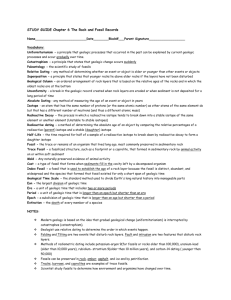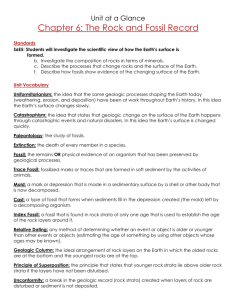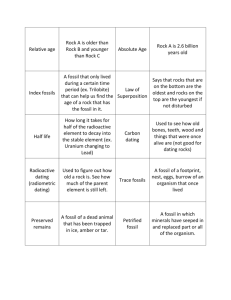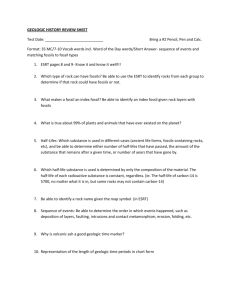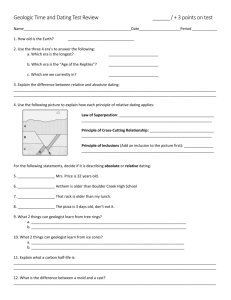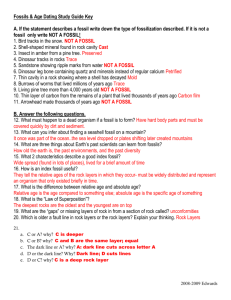Evolution & Geology Vocabulary: Key Terms Defined
advertisement
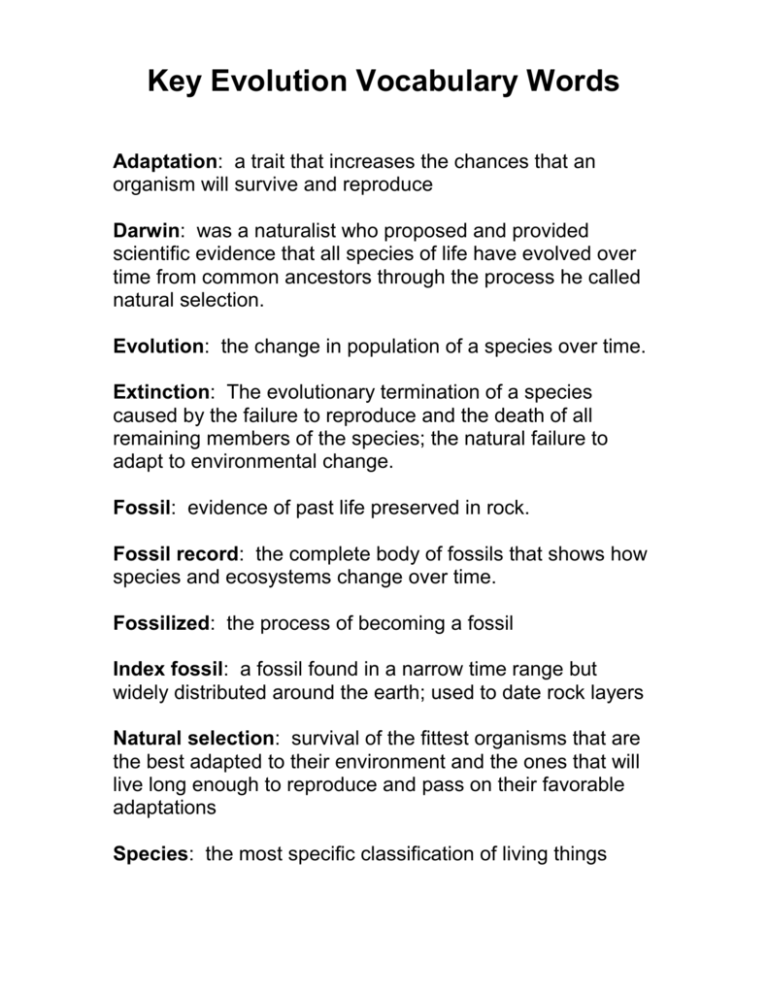
Key Evolution Vocabulary Words Adaptation: a trait that increases the chances that an organism will survive and reproduce Darwin: was a naturalist who proposed and provided scientific evidence that all species of life have evolved over time from common ancestors through the process he called natural selection. Evolution: the change in population of a species over time. Extinction: The evolutionary termination of a species caused by the failure to reproduce and the death of all remaining members of the species; the natural failure to adapt to environmental change. Fossil: evidence of past life preserved in rock. Fossil record: the complete body of fossils that shows how species and ecosystems change over time. Fossilized: the process of becoming a fossil Index fossil: a fossil found in a narrow time range but widely distributed around the earth; used to date rock layers Natural selection: survival of the fittest organisms that are the best adapted to their environment and the ones that will live long enough to reproduce and pass on their favorable adaptations Species: the most specific classification of living things Theory: an explanation that ties together many hypothesis and observations. Trace fossil: a fossilized mark that is formed in soft sediment by the movement or actions of an animal. Absolute Dating: any method of measuring the age of an event or object in years. the actual age for a rock or mineral Continental drift theory: theory that states that the gradual shifting of Earth’s plates causes continents to change their global positions over time Correlation: the matching up of rock layers from different locations Convergent plate boundary: the boundary formed by the collision of two lithospheric plates. Divergent plate boundary: the boundary between two tectonic plates that are moving away from each other. Half-life: the time needed for half of a sample of radioactive substance to undergo radioactive decay. Law of superposition: states that the oldest rocks lie on the bottom and the youngest rocks are on top of any undisturbed sequence of sedimentary rocks. Plate tectonics: the theory that explains how large pieces of the Earth’s outermost layer called tectonic plates move and change shape. Radioactive Dating: the process by which the age of a rock is determined by measuring the amount of radioactive isotopes present in the rock or rock sample Radiometric dating: the method used for absolute dating. Radioactive decay: the process in which a radioactive isotope tends to break down into a stable isotope of the same element or another element. Relative dating: uses information about rock layers and the fossil record to determine the age relationships between rocks Unconformity: gaps in the rock record. Eon: the largest division of geologic time Epoch: a subdivision of a geologic period Era: a unit of geologic time that includes two or more periods Geologic Time scale: the standard method used to divide the Earth’s long natural history into manageable parts Cenozoic Era: era that began about 66 million years ago, known as the “Age of Mammals” Mass extinction: occurs when a large proportion of the earth’s species go extinct in a relatively short period of time. Mesozoic era: era that began 245 million years ago, known as the age of the dinosaurs Paleozoic era: era that began about 544 million years ago and lasted for almost 300 million years Period: a subdivision of the eras in geologic time



